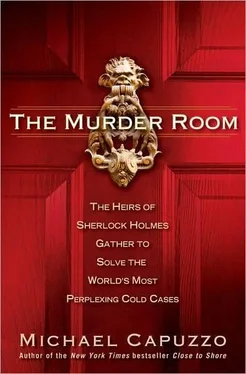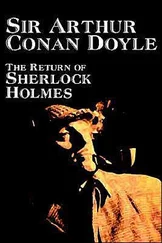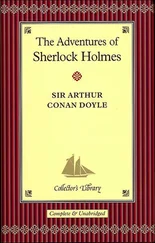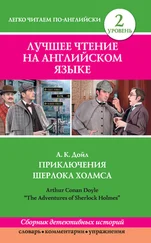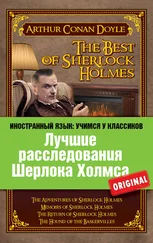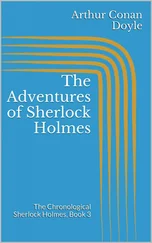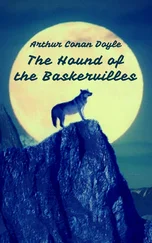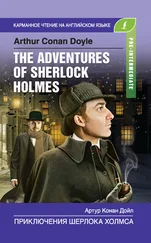Billy’s struggles in school intensified. He was spending all his time holed up in the basement reading detective comic books. His teachers frowned upon this; it was extremely troubling in a young boy. Detective comic books were thought to be a major cause of juvenile delinquency, a theory made popular by German-American psychiatrist Fredric Wertham, a disciple of Freud. His 1954 best seller, Seduction of the Innocent, led to U.S. congressional hearings to censor the comic book industry. Wertham said that comic books filled with sex and violence turned boys into murderers.
But Billy was obsessed with cops and robbers. His favorite book was The Great Detectives, the true-life adventures of the dozen most famous sleuths in history. He admired Scotland Yard detective Robert Fabian, the “Protector of the Innocent”; Treasury agent and Capone nemesis Elmer Lincoln Irey, “The Man Who Couldn’t Be Fooled.” But he was especially fascinated by the flamboyant Eugène François Vidocq of nineteenth-century Paris, “The Magician of Disguise.”
Vidocq was a baker’s son born in 1775 in the south of France, survived the French Revolution as a teenager, just escaped a beheading, and during the reign of Napoleon Bonaparte became the lawman hero of Paris, the swashbuckling “father” of modern criminology.
Even more interesting to Billy, Vidocq had been a rowdy, fearless teenager nicknamed le Vautrin, “Wild Boar.” He’d killed a man at thirteen, robbed his parents at fourteen to leave home and eventually join the Army, where he fought constantly. In the Army Vidocq defeated fifteen men in duels, killed two, and deserted after striking an officer. But nothing stopped him. Vidocq was a notorious killer, con man, highwayman, prison-breaker, womanizer, and spy before turning himself into the mirror of all Western detectives. Billy was taken by one of history’s great figures of transformation and redemption.
At seventeen, college was out of the question for Billy. He planned to join the Army, where he could “get in fights all the time and get away with it.” In the future, he saw himself facing two choices: “I’ll either go to jail or become a cop.”
Billy’s favorite TV show was The Detectives Starring Robert Taylor. It starred his father’s look-alike Matt Holbrook as police captain, leading three brave detectives standing for truth and justice in a large, unnamed city. The three detectives spent all of their time tracking murderers, thieves, and other lawbreakers. They were all passionate in their search for truth-a truth they could believe in.
They were all good friends.
CHAPTER 6. THE MAN WHO SAW DEAD PEOPLE
The second boy balled his fist, cocked the bicep he had been developing for just this moment, and swung a roundhouse upper-cut that crashed into his father’s skull. That’s how he’d imagined it. He’d pumped iron at age fifteen for just this moment. He was rippling with new muscles and confidence, determined his father would never hit him again without consequence. He was relieved when the old man backed down.
Now we can love each other like a father and son should.
Growing up in the tough Philadelphia river ward, Frank saw a headline in the Bulletin about the child found in a box in Fox Chase, only four or five Philadelphia neighborhoods to the north. He noticed a poster of the dead boy. But he didn’t have the luxury of thinking about anything but his own survival.
At fifteen he was a supremely gifted artist. His teachers whispered enviously about his talent. Strangely though, the city kid was obsessed with Norman Rockwell. Rockwell’s paintings of an idyllic small-town America on the covers of The Saturday Evening Post were Frank’s windows to another world. That world was tangible and close. Frank’s neighborhood was only a few miles up the Delaware River from the landmark Curtis Publishing Company building in Philadelphia, where the Post was published, overlooking Independence Hall. He loved the Rockwell covers: Father in his best suit happily watching Mother serve a Thanksgiving turkey on a white tablecloth to a rosy-cheeked, all-American family; the runaway boy on a diner stool, all his belongings on the end of a stick wrapped in red cloth, seated next to the blue-suited cop; the baseball umps calling the game for rain.
They were happy images, and he preferred them all to the images of his own life: his father going off to work in the factory and coming home smelling of the machines he fixed; his father descending to the basement to hand-sew the big canvas sails for rich men’s yachts. Lying in bed at night listening to the gunshots fly, hearing and feeling one slamming the side of his brick row house. His father drinking too much and hitting him. His father hitting and hitting and hitting him.
He’d dreamed of hitting his dad back all those years. Each hit forced the boy’s anger one level higher until it was ready to explode. He’d lifted weights, carefully planning The Punch that would set things right and release the anger once and for all. He was amazed when his father gave him new respect, and he could concentrate on his gifts, his entrance to that other world.
Frank had extraordinary powers and gifts. He was not a student of English or mathematics. He didn’t have a graceful mind, but a mind full of grace. The hands to draw, paint, and sculpt the beauty around him, the eye to see. He started drawing in art classes when he was five years old and had never stopped. And he seemed to possess a third eye, a talent that even when young he knew not to talk about. Sometimes it seemed he could see past and future. Yet with all his abilities, the boy’s anger persisted.
Not long after he knocked his father out cold, Frank, a high school sophomore, won a gold medal in a citywide student art exhibit at a Gimbels department store. In a dream scenario for a young artist, his work was discovered by Walter Stuempfig, a notable realist painter of the midtwentieth century whose oils were compared to Edward Hopper and the Old Masters. Stuempfig offered Frank $5 for his painting and encouraged him to seek a scholarship at the Pennsylvania Academy of the Fine Arts, the famed school that graduated Thomas Eakins and Mary Cassatt, where Stuempfig had taught for forty years. But Frank, touchy as a water moccasin, grew angry when he never saw the $5 from Stuempfig. Then some of his exhibited paintings were never returned to him, and in a fury he swore off the academy, an art scholarship, and the art world entirely. “I wanted to do art, but I didn’t want it hanging on someone’s wall.” He escaped into the Navy, where, aboard ship, he discovered he had his father’s mechanical talents but obsessively sketched the men he worked with in the engine room.
Back home two years later, facing poverty, he landed a job as a commercial photographer at George Faraghan’s studio at Nineteenth and Arch. Slim with light hazel eyes and curly blond hair, Frank was an artist with the rugged body of a lightweight boxer, a photographer of models and a model himself. He also had a lust for life and an intuitive grasp of the art of seduction. Women threw themselves at him like confetti.
He modeled for the Philadelphia Inquirer fashion section hanging out the window of his own 1947 Plymouth with girls hanging all over him; in Reader’s Digest he dressed as a horned devil posing as the checkout boy for a Miss America contestant.
“I was like a kid in a candy shop. Plus I’d meet girls in bars and other places. I had sex constantly. I never really tried at it, to be honest. Single women, married women, they picked me up as often as I picked them up; it was all chemistry. I had sex in a lot of cars.”
The blond photographer offered a full service to models: composites, head shots, and zipless sex. One day, bored, he wrote down all his trysts on a pad of paper, recalling all the bodies if not the names. He’d had sex with 165 different women. He was twenty-six years old.
Читать дальше
